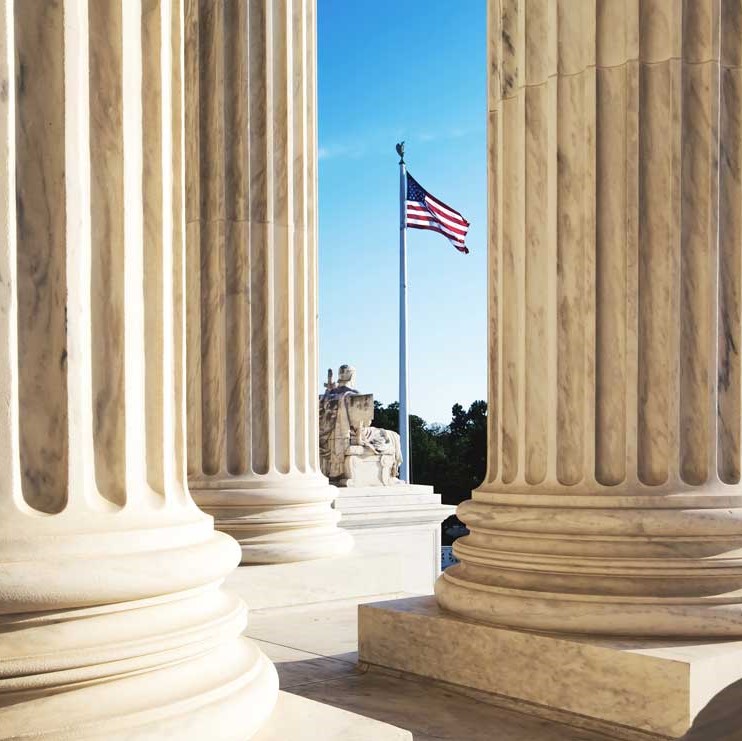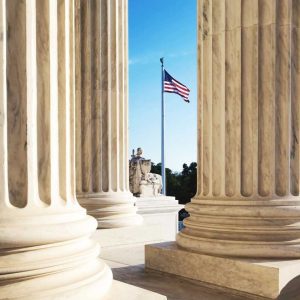This website uses cookies so that we can provide you with the best user experience possible. Cookie information is stored in your browser and performs functions such as recognising you when you return to our website and helping our team to understand which sections of the website you find most interesting and useful.
Congress Passes CARES Economic Stimulus Legislation for Coronavirus

After several days of political drama, on March 27, 2020, Congress passed the Coronavirus Aid, Relief, and Economic Security (CARES) Act (H.R. 748). This legislation is designed to provide economic assistance to those impacted by the current Coronavirus pandemic. This historic legislation is a $2 trillion plan to help out the following:
- Individual workers and families idled by the recent shutdown;
- Businesses sidelined by the fallout of the Coronavirus;
- Healthcare providers in all areas dealing with this pandemic; and
- Other impacted areas.
This is the largest rescue package in U.S. history. The CARES Act was the third piece of legislation to be passed by Congress within the last month dealing with the Coronavirus (thus referred to as “Phase 3”). This massive bill moved quickly through the Senate but took several twists and turns after being unveiled on March 19, 2020. There was some initial bipartisanship with this bill in the Senate, then some political bickering – but in the end, the bill passed by a unanimous vote of 96-0. The bill then moved to the House and was passed by a voice vote, and the President will soon sign the bill into law. While CARES is a major piece of legislation, it will likely not be the last legislation offered by Congress to deal with Coronavirus (“Phase 4” is already being talked about).
This bill has many provisions and encountered multiple changes in the past few days. This article will highlight the following areas of the CARES Act:
- Tax Incentives for Individuals and Businesses
- Loan and Financing Packages for Businesses
Please note that the provisions in the CARES Act are new and will need further guidance and direction from various federal agencies. The goal of the legislation is to assist individuals and businesses as quickly as possible, and hopefully this guidance will be forthcoming soon. The discussion below is our general understanding of these items at this point; however, it could change as additional implementation details of the CARES legislation are provided.
Tax Incentives in CARES
In most tax legislation, there are some changes that provide savings for taxpayers, and other provisions that cause higher taxes for businesses and individuals. In the CARES Act, things were different. There were many significant tax provisions in the bill, and each of them were designed to provide liquidity to individuals and businesses impacted by the current Coronavirus.
Here is a listing of several individual tax changes in the CARES Act:
- Individual Recovery Rebates. Individuals will be eligible for a rebate of $1,200 (and $2,400 if married filing jointly), plus $500 per qualifying child. This rebate is available for individuals with Adjusted Gross Income (AGI) of $75,000 or less (for single taxpayers; $150,000 or less for married couples filing jointly) and is phased out for taxpayers with AGI above these thresholds. This rebate is available even for individuals with no income. There are several other provisions and exceptions to this new program, but the plan is for the IRS to process these rebates and issue checks to eligible individuals in the next several weeks. For most individuals, no action will be needed on their part to obtain a rebate check. The IRS will use the individual taxpayer’s 2019 or 2018 tax returns to assist them.
- Use of Retirement Accounts. Individuals impacted by the Coronavirus may find themselves in financial difficulty and therefore seek to draw on their retirement accounts for funds. As occurred with prior disasters, CARES allow individuals to avoid a 10% penalty tax for early distributions from their retirement accounts. In addition, the income is spread over a three-year period. These distributions are limited to $100,000. Also, individuals may be permitted to borrow up to $100,000 from their retirement plans with flexible repayment options.
- Relief from Required Minimum Distributions (RMD) Rules. The provision removes the RMD rules for 2020 for certain retirement plans, including IRAs. This relief may assist taxpayers during the current economic downturn.
- Charitable Contributions. CARES permit individuals in 2020 to deduct up to $300 for donations to charitable organizations. This is available for non-itemizers. In addition, the 50% of AGI limitation on charitable contributions is removed for the 2020 year. Further, the taxable income limitation for corporations is raised to 25% in 2020.
Here is a listing of several business tax incentives in the CARES Act:
- Employee Retention Credit. CARES offers a refundable payroll tax credit of 50% of wages paid to employees during the Coronavirus crisis. This tax credit is available to employers that: (1) had their operations partially or fully suspended by the COVID-19 shutdown order; or (2) experienced a drop of 50% or more in gross receipts compared with the prior year. The credit is based on wages paid to its employees, and covers the first $10,000 of compensation, including health benefits, paid to an eligible employee.
- For employers with > 100 full-time employees, qualified wages are wages paid to employees when the employer is impacted as described above by the Coronavirus.
- For eligible employers with < 100 full-time employees, all employee wages qualify for the credit, whether the employer is open for business or subject to a shutdown order.
- Tax-exempt organizations may also qualify for this employee retention credit.
- The credit is provided for wages paid or incurred from March 13, 2020 through December 31, 2020.
- Deferred Payroll Taxes. The CARES incentive permits employers AND self-employed individuals to defer payment of the employer share of the FICA tax of their employees (employers are responsible for paying a 6.2% FICA tax on employee wages). The provision allows the deferred payroll tax to be paid over the following two years. One half of the deferral would need to be paid by December 31, 2021; and the other half by December 31, 2022.
- Changes with Net Operating Losses (NOLs). This CARES change softens the new limitations from TCJA related to NOLs. First, the provision removes the taxable income limitations for NOLs. Further, any NOLs incurred in 2018, 2019, or 2020 can be carried back five years to obtain a refund of prior years’ tax liabilities. This could be a boost to a business struggling from the impact of Coronavirus.
- New Limitation on Large Individual Losses Changed. CARES revises the new loss limitation from TCJA that applied to pass-through businesses and sole proprietors. The limitation of $500,000 will not apply for years 2018 through 2020. Several other modifications were made to this limitation for future years. This relief for 2018-2020 will allow impacted individuals to use these business losses and generate cash flow from deducting these losses. Amended tax returns for 2018 might also be available for some taxpayers.
- Enhanced Deductibility of Business Interest Expense. This change increases the amount of interest expense businesses are permitted to deduct by raising the 30% limitation to 50% of adjusted taxable income. This applies for 2019 and 2020. Additional provisions are added with partnerships. This higher deduction level could assist businesses in these difficult times.
- Fix for TCJA Glitch with Qualified Improvement Property (QIP). This special CARES provision allows businesses to use 100% bonus depreciation for costs related to improving facilities. The change remedies a TCJA drafting error and could provide a large tax savings for any recent QIP items. Thus, with this CARES item, QIP costs can now be written off in one year rather than over a 39-year depreciable life. This change is retroactive for QIP items in 2018 and 2019.
Loan and Financing Packages for Businesses in CARES
As stated, one of the key goals of CARES was to assist businesses struggling from the impact of the Coronavirus. Tied in with this goal was a focus on encouraging businesses to retain their workforces. CARES therefore offers several loan programs to assist businesses by providing liquidity and capital at the time they need it the most. Below are some of the loan packages introduced in CARES.
 Paycheck Protection Program. The SBA 7(a) loan program is expanded to include Small Business Interruption Loans (SBILs). Eligible covered businesses include any business concern, not-for-profit organization, veteran organization, or Tribal business concern, with no more than 500 employees (with limited exceptions). The Administrator of the SBA has the authority to establish different employee thresholds for an industry. Not-for-profits receiving Medicaid expenditures are specifically excluded from eligibility. Affiliation rules are waived as well, related to ownership by Small Business Investment Companies.
Paycheck Protection Program. The SBA 7(a) loan program is expanded to include Small Business Interruption Loans (SBILs). Eligible covered businesses include any business concern, not-for-profit organization, veteran organization, or Tribal business concern, with no more than 500 employees (with limited exceptions). The Administrator of the SBA has the authority to establish different employee thresholds for an industry. Not-for-profits receiving Medicaid expenditures are specifically excluded from eligibility. Affiliation rules are waived as well, related to ownership by Small Business Investment Companies.
- Businesses with a NAICS code starting with 72 are eligible as long as the number of employees per physical location is less than 500 employees. This includes hotels, casinos, restaurants, and other travel venues.
- The term “employee” is defined as a full-time, part-time, or other basis.
- To be eligible for a loan, borrowers must have been in business on February 15, 2020 and had employees or independent contractors for which they paid salaries and payroll taxes. Borrowers must certify that the economic uncertainty they face from COVID-19 requires them to request loan funds. Finally, borrowers must certify intent to use the funds to retain workers and pay wages and benefits, as well as mortgage payments, utilities, rent, and interest on other debts.
- Borrowers are eligible even if they have access to other credits.
- The Maximum Loan Amount for each eligible business is the lesser of $10 million or the product of 2.5 times the average monthly payments for payroll and benefits incurred for the one-year period before the date on which the loan is made. Seasonal employers can use the average of the period from February 15, 2020 through June 30, 2019, plus any outstanding loan amount under 7(b)(2), which is the Disaster Loan program. It is our preliminary interpretation that the final bill helps taxpayers that moved quickly to gain access to capital through the Disaster Loan program qualify for the SBIL loan, by consolidating these loans.
- The actual use of loan funds is expanded to include not only wages and benefits, but also for mortgage payments, interest on other debt, rent, and utility payments for the eight weeks following the date of loan origination.
- Borrowers receiving assistance under 7(b)(2) of the Small Business Act (Disaster Loans) can refinance their loan under this program.
- Borrowers under this program are eligible for payment deferment of a minimum of six months to a maximum of one year. The maximum interest rate is 4% and the loan can be amortized for up to 10 years.
- The Express Loan limit is increased from $350,000 to $1,000,000.
- Normal SBA fees are waived. No collateral or personal guarantees are required.
- Disaster Loan Program Changes. Included is a waiver of certain requirements to eligible businesses for the period from January 31, 2020 to December 31, 2020. The provisions waived allow for the Disaster Loan Program to be similar to provisions in the Paycheck Protection Program.
- Eligible businesses include those with 500 or less employees, self-employed, cooperatives and ESOPs with no more than 500 employees, and tribal business concerns with less than 500 employees.
- Personal guarantees on Disaster Loans of not more than $200,000 are waived.
- The requirement that businesses need to have existed for one year is waived.
- The requirement that the borrower is unable to obtain credit elsewhere is waived.
- Applicants may receive an advance of funds based solely on the submission of a loan application of up to $10,000. The advance does not have to be repaid if the application is denied. The advance is to be used for payroll and benefits including sick leave, mortgage payments, additional materials and supplies, and other obligations that were unpaid due to revenue losses.
- Entrepreneurial Development Provisions. SBA Resource Partners will receive an appropriation for a variety of purposes. Resource partners include Small Business Development Centers and Women’s Business Centers. These Resource Partners will provide assistance including grants for small business concerns located in an area substantially affected by COVID-19.
- The allowed use of grant funds include disruptions caused by COVID-19, accessing resources for capital and relief, addressing the impact and prevention of COVID-19, improvement of remote workplaces, risks and mitigation of cyber threats, and any other relevant business practices necessary to mitigate the economic effects of COVID-19 or similar occurrences. The requirement for matching funds is waived.
- Loan Forgiveness for Small Business Interruption Loans. Any small business concern that obtains a 7(a) SBIL loan during the four month period starting on March 1, 2020 and ending on June 30, 2020 can have a portion of their loan forgiven for the costs of maintaining payroll continuity incurred for certain wage earners during this same four month period.
- Compensation limits apply. Annual compensation of greater than $100,000 per employee will be excluded.
- The forgiveness amount is reduced if the number of full-time employees is reduced. Borrowers can elect one of two specified measurement periods prior to March 1, 2020 to compare their employee count during the eight-week period that they are eligible for loan forgiveness. In the event the employee count is less, the amount of expenses eligible for loan forgiveness would be reduced by that percentage. Additionally, a reduction in employee wages of more than 25% during the eight-week period, as compared to specified measurement periods prior to March 1, 2020, would also reduce the loan forgiveness amount.
- Compensation includes sick pay covered under the Families First Coronavirus Response Act as well as family leave wages under the same Act.
- There are additional provisions regarding limits to the compensation that can be included. Tipped workers are not subject to the wage limitation.
- Any loan forgiveness under this section is not taxable income to the small business concern.
- Borrowers are required to provide detailed documentation, including payroll and benefit records, and evidence of payment of expenses eligible for forgiveness to their lender to assess the amount of loan forgiveness for which they are eligible.
- Loan Subsidy for Existing SBA 7(a) Loans. Existing loans under 7(a) of the SBA will get a six-month subsidy from the Administrator during which time payments will be paid by the Administrator. Loans under deferment and new 7(a) loans in 2020 also qualify for this subsidy. This subsidy is for most 7(a) loans as well as Title V loans made to state and local development companies.
We trust this provides you some idea of the many incentives and opportunities contained in the CARES legislations. Please contact your Sikich advisor for assistance with any of these items – Sikich CARES for you and your business.
Resources
The Revenue Estimate from the Joint Committee on Taxation (JCT) on the tax provisions in CARES
A link to several resources from House Ways and Means Committee Ranking Member Kevin Brady
This publication contains general information only and Sikich is not, by means of this publication, rendering accounting, business, financial, investment, legal, tax, or any other professional advice or services. This publication is not a substitute for such professional advice or services, nor should you use it as a basis for any decision, action or omission that may affect you or your business. Before making any decision, taking any action or omitting an action that may affect you or your business, you should consult a qualified professional advisor. In addition, this publication may contain certain content generated by an artificial intelligence (AI) language model. You acknowledge that Sikich shall not be responsible for any loss sustained by you or any person who relies on this publication.





